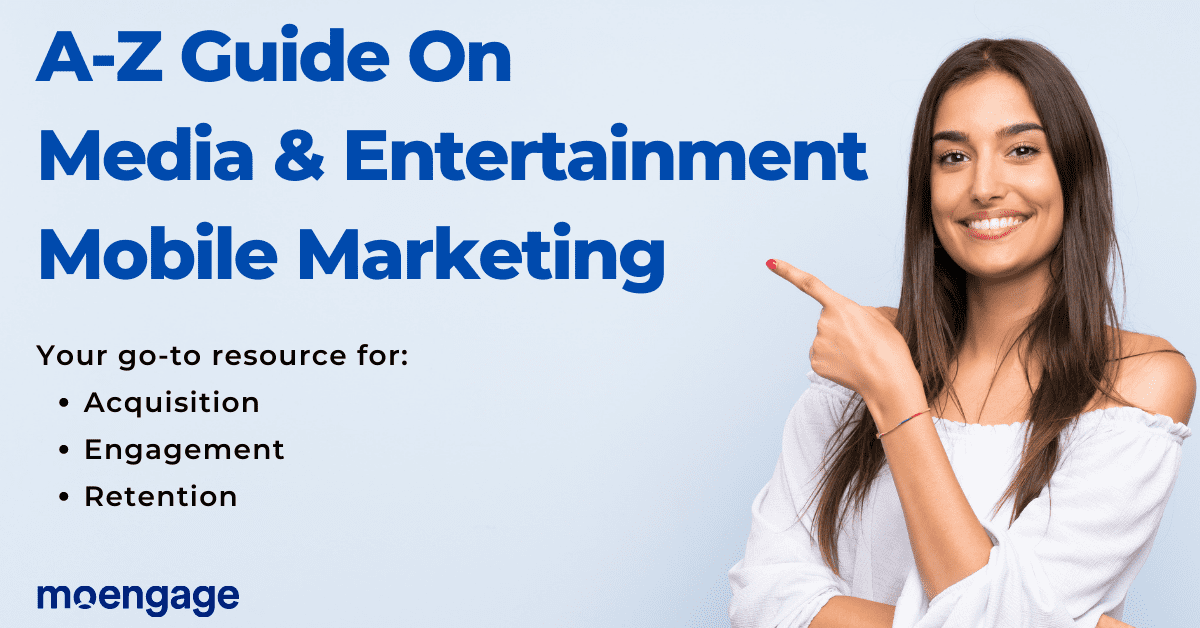Super Bowl LV 2021: Growth Lessons For Sports Brands During Major Live Events

Reading Time: 8 minutes
Bonus Content
|
Celebrity performances. New trailers of upcoming movies. Fight for the best TV commercials. Super Bowl LV had them all. Although this NFL championship game followed all the classic traditions, there were new trends that emerged.
Played at the Raymon James Stadium in Florida, Super Bowl LV was the lowest attended Super Bowl event due to COVID-19 protocols limiting stadium capacity to only 25,000 fans (fun fact: the NFL gave 7,500 vaccinated health care workers free Super Bowl tickets!).
Like me, NFL fans who couldn’t attend the event in person switched to mobile apps for live-streaming or getting regular updates.
The result?
In the week leading to the Super Bowl LV 2021, there was a surge in mobile app downloads and mobile app activity for all Sports brands that either live-streamed the event or provided live commentary and updates.
Here’s what different brands did this year and what lessons you can take away for the next live event:
1. Provide exclusive access to live-stream sporting events
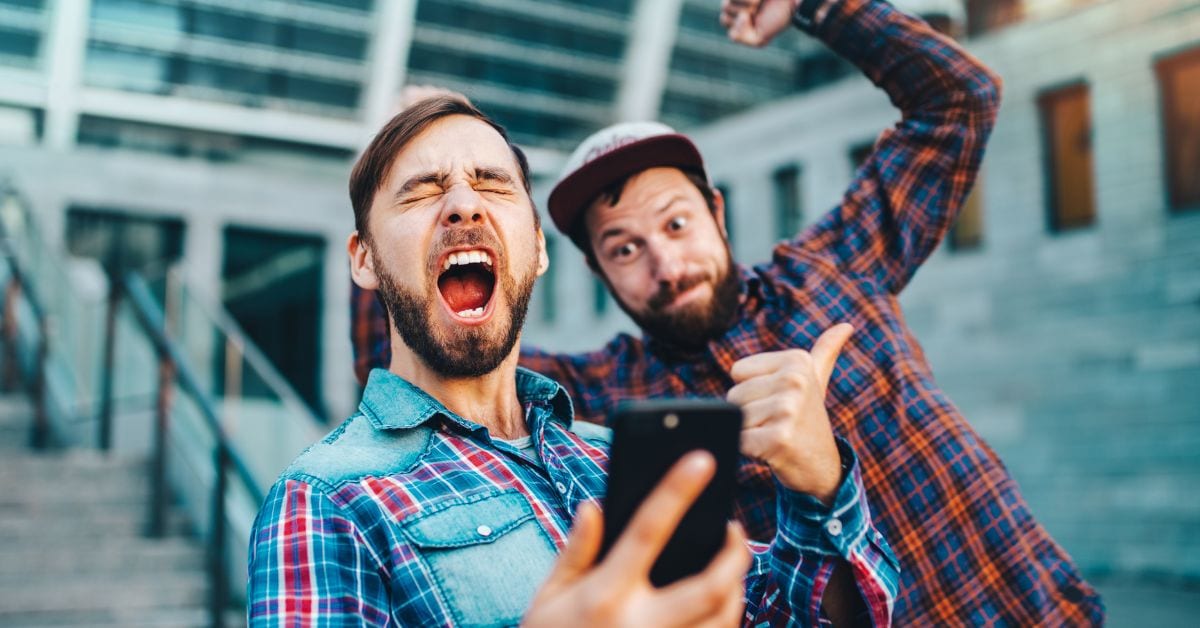
A classic way of ramping up your sports mobile app downloads and increasing user engagement is by giving exclusive real-time streaming access to major sporting events. This year, CBS had the exclusive rights to stream Super Bowl LV 2021.
Example 1: Official NFL mobile apps
Football fans could live-stream the Super Bowl LV 2021 on the official NFL mobile app and listen to the live commentary on the NFL OnePass mobile app on both iOS and Android devices.
The official NFL app saw an increase of 23% in mobile app downloads globally in the first week of February 2021. The United States and China constitute the biggest chunk of the official NFL app users (65K and 11.6K users, respectively).

For football fans outside The United States, the NFL live-streamed the event on their official Game Pass International mobile app. The mobile app saw an increase of 259% in mobile app downloads, with the highest surge in Germany (93%) in the week leading to the event.
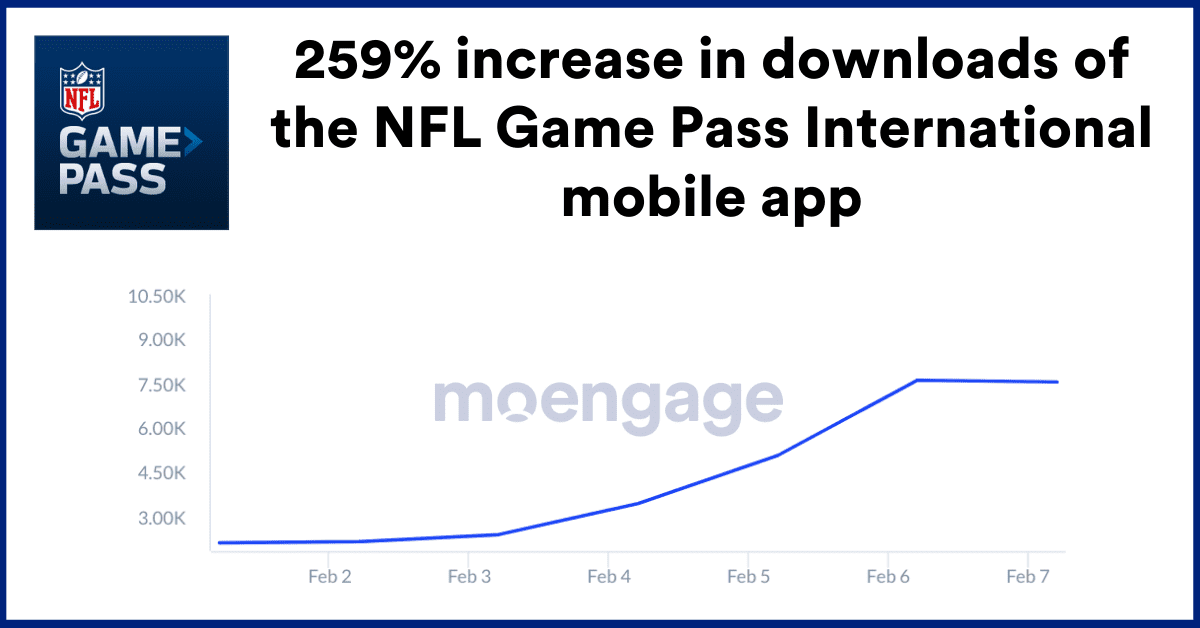
About the launch of NFL’s OnePass mobile appIn January 2021, the NFL launched their OnePass mobile app, providing football fans a way to reserve tickets for the Super Bowl LV 2021 in the Raymon James Stadium. This move indicates the rising adoption of mobile app usage in the United States, and we believe this trend will continue for upcoming major live sporting events. As of today, the NFL OnePass iOS and Android apps have over 230K downloads from the App Store and the Play Store. |
Example 2: Official CBS mobile apps
The CBS Sports App saw an increase of 17% in mobile app downloads in the first week of February 2021. While there was a user growth of 16% in The United States, Canada led the charts with a 50% surge in mobile app downloads.
Fun fact: this year, CBS Sports offered its users extensive access to pre-game Super Bowl LV 2021 coverage.

Similarly, the CBS Live TV mobile app saw an increase of 27% in mobile app downloads from The United States in the same time period.

However, not all Sports brands share the luxury of signing multi-billion contracts with the NFL (although the NFL has not disclosed the actual value of the contract, CNBC estimates that CBS, NBC, and Fox paid around $3 billion a year for the period 2013-20 for the rights to live-stream all NFL games, including Super Bowl events).
So, what can you do?
In such cases, partnering up with television networks like CBS is a great alternative. This year, fuboTV, a sports-centric TV subscription service, allowed its users to watch the Super Bowl LV 2021 on CBS through the official fuboTV mobile app. This led to a 12.23% increase in mobile app downloads, primarily from The United States.

Sports brands can also provide live commentary on their mobile apps. One such example is SiriusXM Radio. During the Super Bowl LV 2021, fans could listen to NFL veterans, players, and coaches through the mobile app. A few other examples are Westwood One and Radio La Suavecita, which provided Spanish commentary for this event.
2. Leverage existing users to create referral loops

Another strategy to grow your user base and increase app usage is using referrals. People are more likely to install a mobile app when recommended by a friend, a family member, or a colleague. Users acquired via referrals have a higher engagement with the app and stay longer. They’re also more likely to subscribe to your existing monthly or annual plans.
Example: Yahoo Sports mobile app
Yahoo allowed its mobile app users on both iOS and Android devices to invite up to three friends to watch the Super Bowl together, increasing app downloads and usage through referrals. Yahoo’s Watch Together feature opens up a split-screen video chat with the users’ referrals and live-streams the game to create a virtual co-viewing experience.
This strategy worked really well for Yahoo, resulting in a 19% increase in mobile app downloads globally in the week leading to the Super Bowl LV 2021.

Here’s a step-by-step process to follow to create referral loops for your mobile app users:
- Identification: Create a segment of your users you feel are more likely to refer a friend. These can be users who’ve been with you for long, or users who downloaded your app through a referral from another existing user. You can also create segments based on what content they’ve consumed on your app, for example, all users who have viewed previous NFL game replays or highlights.
- Navigation: Use in-app interstitials, push notifications, emails, or text messages to inform this segment of users about your referral program. You can also convert your website visitors to mobile app users by sharing prompts on your website. Once on your app, lead these users to your referral screen on your app and give them a custom code to share. At this point, make sure you’re highlighting the benefits of referring a friend on this screen. Yahoo does this perfectly:
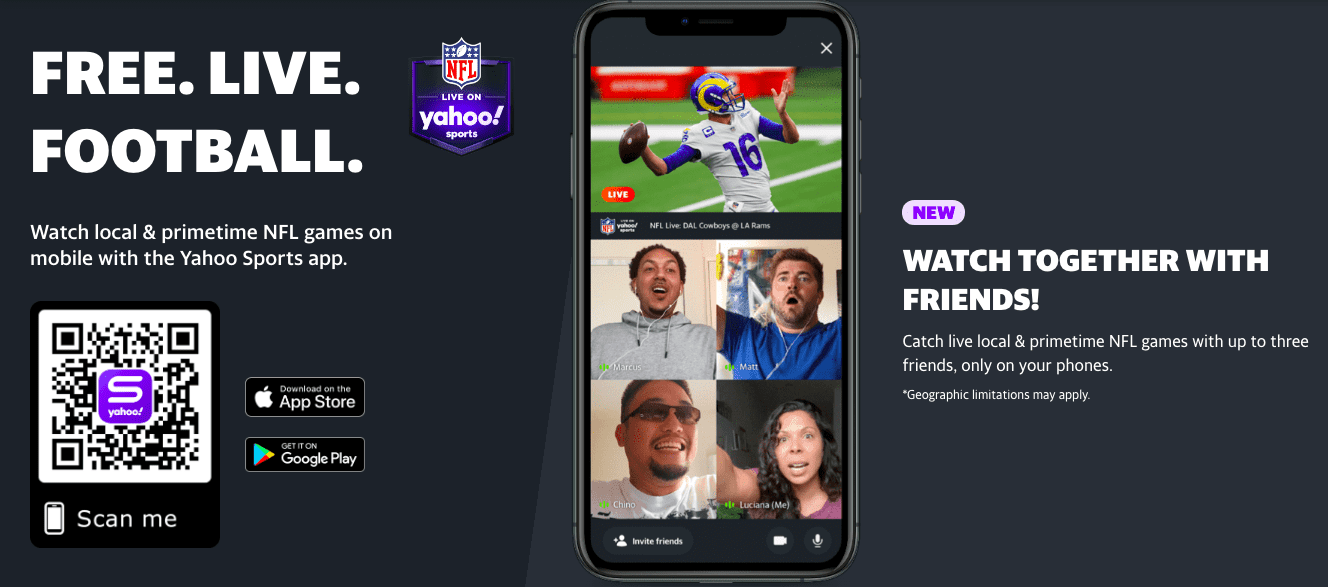
An example of how Yahoo encourages its website visitors to download their mobile app - Onboarding: When your referred users install your app, it is important to create a seamless onboarding experience. Your communication has to be personalized and relevant, and your recommendations have to align with their preferences.
To learn how MoEngage’s customer engagement platform can help out, schedule a call with our team here.
3. Experiment with different monetisation models

Live sporting events are the perfect time to test hypotheses. Since there is no golden monetisation model that works for every brand, experimentation is key. Here are a few models you can try out:
- Subscription-based streaming: You can include live coverage of major events as an offering in your subscription plans. If you have different tiers, then leverage these events to run campaigns for plan upgrades.
- Transaction-based video-on-demand: Similar to a pay-per-view (PPV) model, you can provide coverage to live events for a one-time charge. For example, Fite.tv allowed its users to watch the Super Bowl LV 2021 halftime show on their mobile app on a PPV basis. The brand saw a 19% increase in mobile app downloads in the week leading to the event.
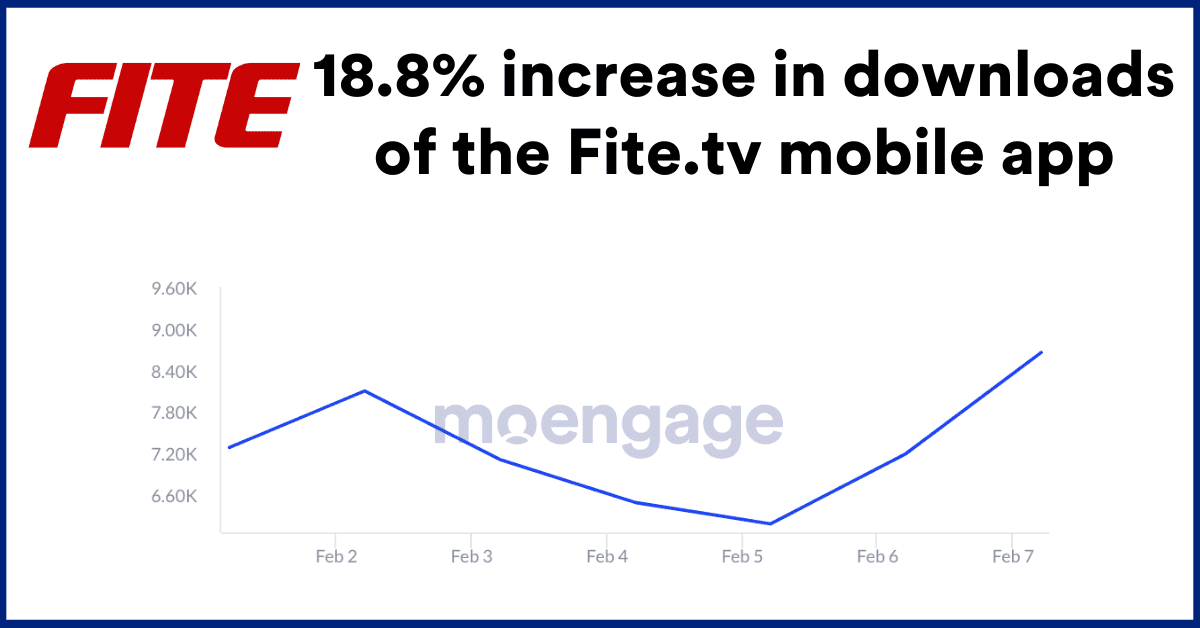
18.8% increase in downloads of the Fite.tv mobile app (Data source: Apptopia) - Advertising-based streaming: Lastly, you can provide free access to the live stream and introduce ad spaces in between the stream. These spaces can then be sold to advertisers for a fee.
4. Introduce the element of fantasy
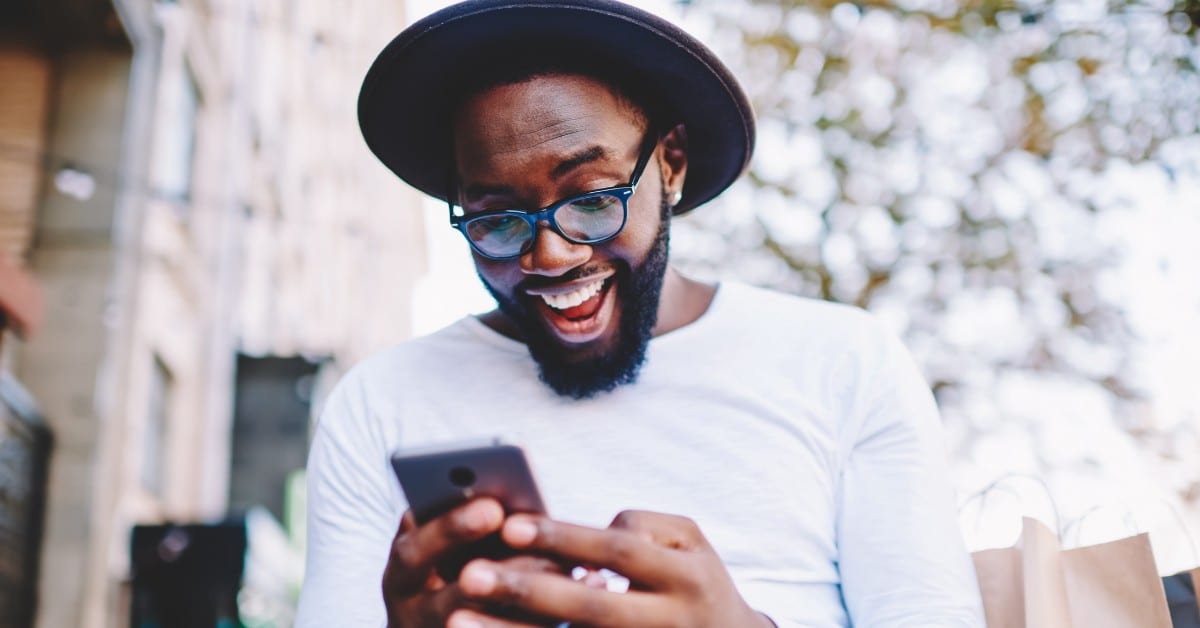
The concept of picking players based on their real-time stats and hosting a contest has been around since shortly after World War II. According to Ibisworld, the market size of the Fantasy Sports industry is estimated to be $8.4bn in 2021.
The NFL Football Fantasy mobile app saw a 21.32% increase in downloads in the first week of February 2021.
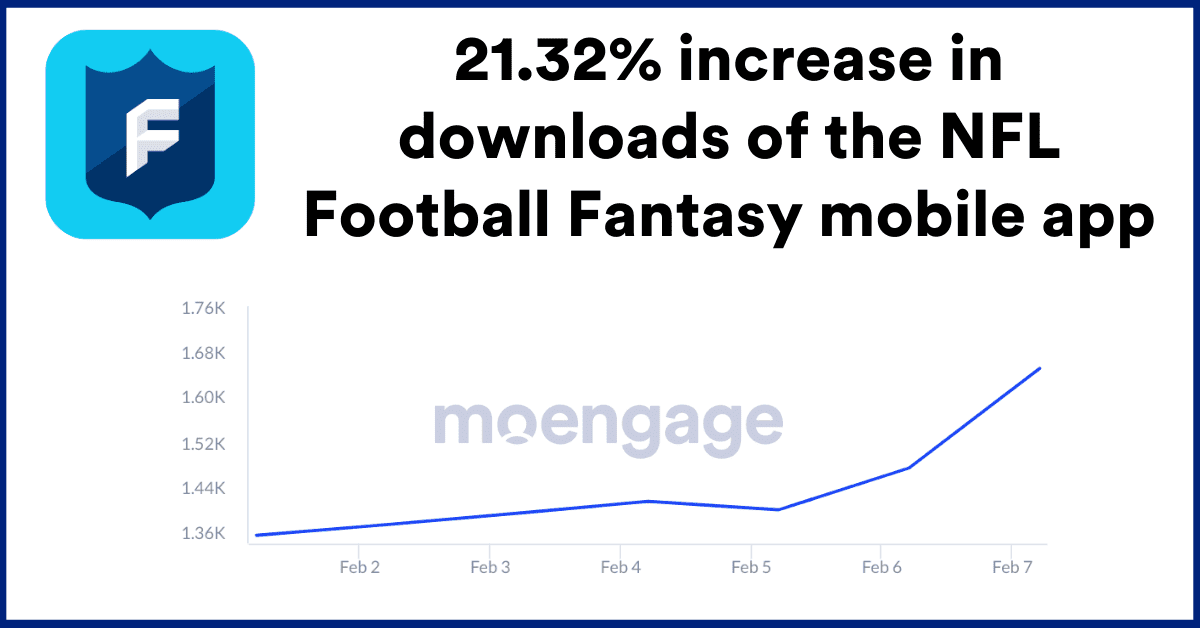
Apart from football, Fantasy Sports extend to other sports like baseball, basketball, soccer, cricket, football, golf, hockey, and pro-wrestling. Syncing these with live events is a great way to increase regular app usage.
By introducing Fantasy Sports, you also end up gamifying your mobile app. You can introduce daily challenges and achievement ladders to induce the spirit of competition. Word-of-mouth referrals and FOMO (fear of missing out) are two big reasons why Fantasy Sports are a big hit with sports fans.
Conclusion and next steps
Seeing how different Sports brands grew during the days leading to the Super Bowl LV 2021, it is time to replicate the success yourself.
- If you haven’t already, mark the most important sporting events in your calendar and be prepared.
- Start mapping different segments of your users to upcoming events based on their preferences or their watch history on the app.
- Find the best time to send out communication about a major sporting event and personalize your messages.
- Build an omnichannel strategy and leverage different communication channels to get the info out to the relevant audience.
- Lastly, don’t forget to experiment and record your observations!
While the ways mentioned will help you increase user growth and app usage, user retention is equally important. How can you get these new users to stay for long? What can you do to ensure they don’t stop using your platform after the event? Can your app be more than a one-hit-wonder? Get answers in our A-Z guide on Mobile Marketing for Media & Entertainment brands:






